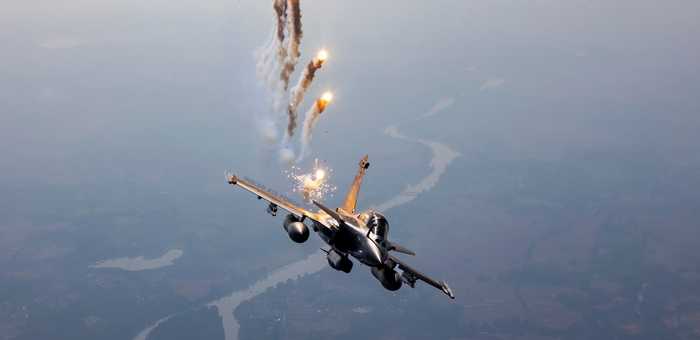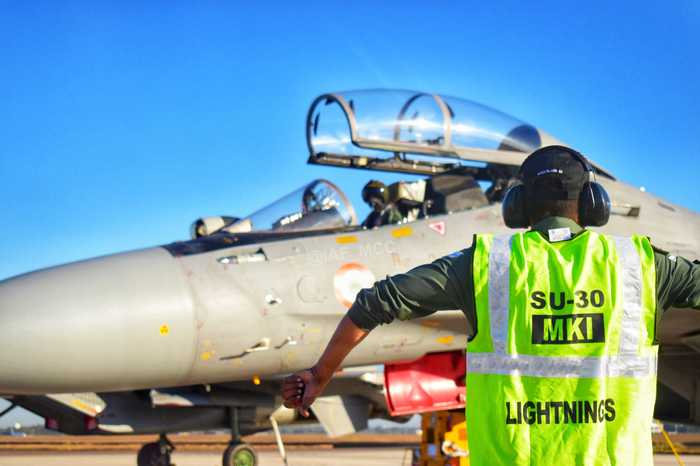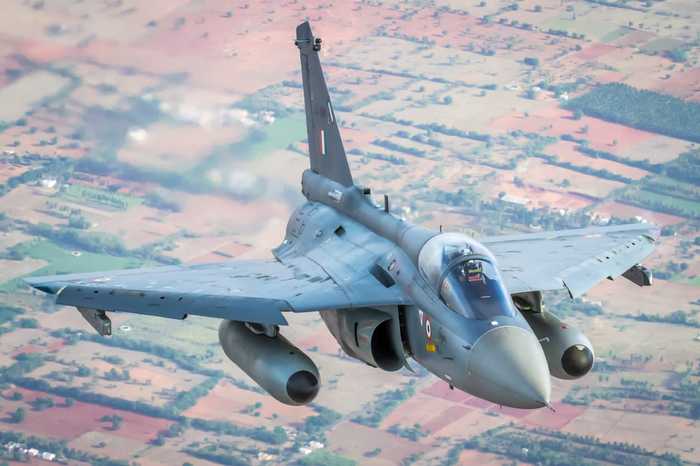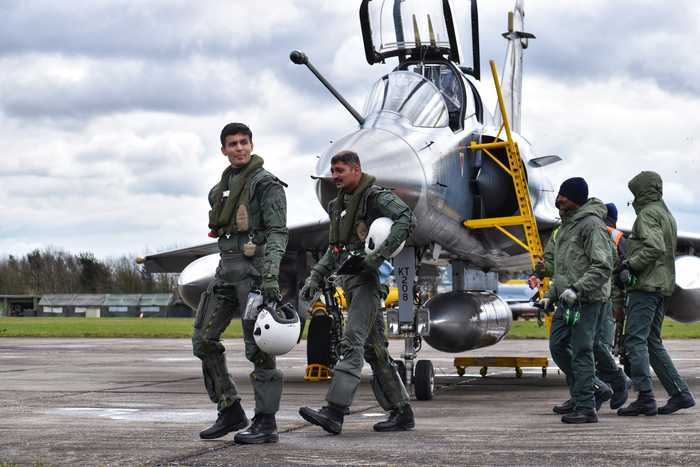Published 17:57 IST, September 2nd 2024
Inside the Cockpits of IAF's Top 4 Fighter Jets and their Prowess on the Battlefield
The Indian Air Force (IAF) boasts a formidable fleet of fighter jets, with four aircraft standing out as the backbone of its air dominance.
- Defence
- 4 min read
New Delhi, India: The Indian Air Force (IAF), a crucial pillar of India's defence, boasts a formidable fleet of fighter jets that safeguard the nation’s airspace. These advanced aircraft are equipped with cutting-edge technology, lethal weaponry, and superior manoeuvrability, ensuring that the IAF remains at the forefront of aerial combat capabilities. Among the numerous aircraft in its arsenal, four fighter jets stand out as the backbone of India’s air dominance.
1. Dassault Rafale: The Game Changer
The Rafale, a multirole fighter jet manufactured by Dassault Aviation, has become the pride of the Indian Air Force. Inducted into the IAF in 2020, the Rafale is celebrated for its versatility, advanced avionics, and stealth capabilities.

The Rafale's capabilities are further enhanced by its Spectra electronic warfare system, which provides superior survivability by jamming enemy radar and launching decoys. The aircraft's radar cross-section is minimized through its design, making it less detectable by enemy radar systems.
The Rafale is also equipped with the Meteor air-to-air missile, capable of engaging targets beyond visual range with precision. This missile, coupled with the jet's agility and speed, makes the Rafale a formidable adversary in dogfights and long-range engagements. Additionally, the Rafale's ability to carry a wide range of weapons, including SCALP air-to-ground missiles and Hammer precision-guided munitions, gives it a significant edge in ground attack missions.
In exercises with foreign air forces, the Rafale has consistently outperformed its competitors, further cementing its reputation as a game-changer for the IAF.
2. Sukhoi Su-30MKI: The Workhorse
The Sukhoi Su-30MKI, developed by Russia's Sukhoi and customized for India by Hindustan Aeronautics Limited (HAL), is the backbone of the IAF. This twin-engine, multirole fighter is known for its long-range, payload capacity, and advanced avionics.

The Su-30MKI's primary strength lies in its supermaneuverability, allowing it to execute Pugachev's Cobra and other advanced manoeuvres that give it an edge in dogfights. The aircraft is equipped with a powerful radar system, the N011M Bars, capable of tracking multiple targets simultaneously at long ranges.
Armed with a variety of missiles, including the R-77 for air-to-air combat and the BrahMos-A for precision strikes, the Su-30MKI can engage both aerial and ground threats with equal effectiveness. Its ability to carry out long-duration missions with aerial refuelling makes it a strategic asset for the IAF.
The Su-30MKI has been involved in several key operations, including Balakot, where it provided escort to Mirage 2000s and maintained air superiority. Its versatility and reliability have earned it the title of the IAF's "workhorse."
3. HAL Tejas: The Indigenous Pride
The HAL Tejas, an Indigenous light combat aircraft (LCA), represents India's growing self-reliance in defence production. Developed by HAL and the Aeronautical Development Agency (ADA), the Tejas is a single-engine, multi-role fighter designed for air superiority, ground attack, and reconnaissance missions.

The Tejas is equipped with advanced avionics, including an Israeli-made EL/M-2032 radar and a sophisticated electronic warfare suite. It's agility and lightweight design make it highly manoeuvrable, and its composite airframe provides durability while reducing radar cross-section.
The Tejas has been equipped with a range of air-to-air and air-to-ground munitions, including the Astra BVRAAM and the Derby missile, giving it robust combat capabilities. The aircraft has proven its mettle in numerous exercises and is poised to replace the ageing MiG-21 fleet, becoming a key component of the IAF's future fleet.
With ongoing upgrades, including the development of the Tejas Mk-1A and Mk-2 variants, the Tejas is set to become even more formidable, symbolizing India's technological advancements and self-reliance in defence manufacturing.
4. Mirage 2000: The Proven Veteran
The Mirage 2000, developed by Dassault Aviation, has been a stalwart of the IAF since its induction in the mid-1980s. This single-engine, multi-role fighter is renowned for its precision strike capabilities and has played a pivotal role in several key operations.

The Mirage 2000's combat history is impressive, with its most notable contribution being the Kargil War in 1999, where it executed precision strikes on enemy positions in the challenging mountainous terrain. The aircraft's ability to deliver laser-guided bombs with pinpoint accuracy was a game-changer in the conflict.
In 2019, the Mirage 2000 was again in the spotlight during the Balakot airstrike, where it delivered precision strikes on a terrorist training camp deep inside Pakistan, showcasing its continued relevance in modern warfare. The Mirage 2000 has undergone several upgrades, including the integration of new avionics, radar systems, and weapons, extending its operational life and enhancing its combat capabilities. Despite being a veteran in the IAF fleet, the Mirage 2000 remains a reliable and potent platform for both air-to-air and air-to-ground missions.
The Indian Air Force's top fighter jets—Dassault Rafale, Sukhoi Su-30MKI, HAL Tejas, and Mirage 2000—each bring unique strengths and advanced technologies to the table. Together, they form a formidable air defense network that ensures India’s strategic dominance in the region.
Updated 17:57 IST, September 2nd 2024